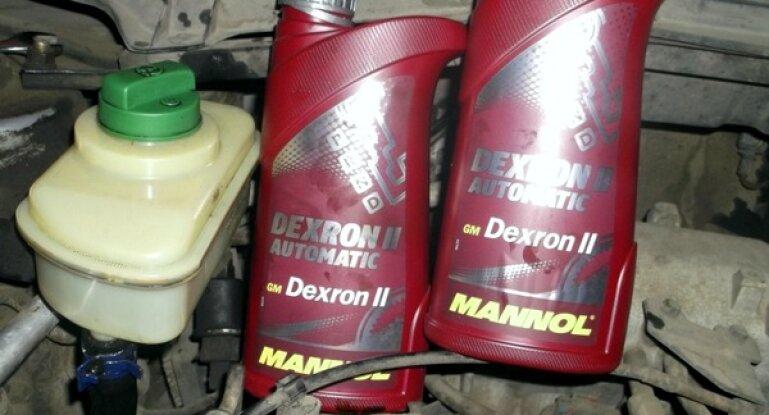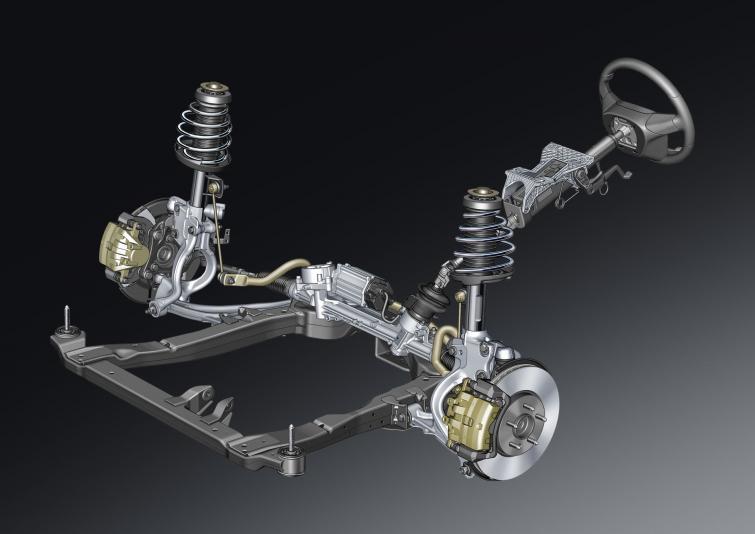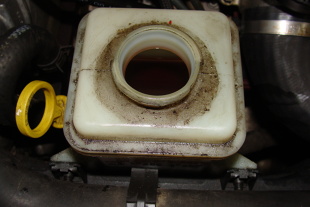
Power steering fluid. What to search? When to replace?
Content
 Most cars produced today are equipped with electric power steering. However, among the vehicles in service, the power steering system still dominates. And this mechanism needs good oil.
Most cars produced today are equipped with electric power steering. However, among the vehicles in service, the power steering system still dominates. And this mechanism needs good oil.
Steering is one of the most important parts of a car. It is also one of the most vulnerable mechanisms. The two most important steering components are the steering column and steering gear. The most common gears are colloquially known as crushers. They are located horizontally in relation to the steering column and are mainly used in front-wheel drive vehicles. Rear wheel drive vehicles use globoid, ball screw or worm gears (the latter usually found in higher end models).
The ends of the steering gear are connected to tie rods that change the position of the switches and therefore the wheels of the car.
Power steering fluid. Pump in the system
 The above description refers to a simple steering system. However, in this case, driving the car or turning the wheels with the steering wheel requires a lot of effort from the driver. To reduce the effort the driver has to use to turn the vehicle's wheels, a power steering system is used in which the assist force is generated by a pump (which takes power from the engine) and a forced force. oil fills the system. Although this oil works in less difficult conditions than, for example, motor oil, it must also have certain properties and must be replaced periodically. It should be remembered that the fluid in the power steering system is under pressure.
The above description refers to a simple steering system. However, in this case, driving the car or turning the wheels with the steering wheel requires a lot of effort from the driver. To reduce the effort the driver has to use to turn the vehicle's wheels, a power steering system is used in which the assist force is generated by a pump (which takes power from the engine) and a forced force. oil fills the system. Although this oil works in less difficult conditions than, for example, motor oil, it must also have certain properties and must be replaced periodically. It should be remembered that the fluid in the power steering system is under pressure.
It is important to note that the oil in the steering system is used for more than just supporting the force that needs to be applied when turning the steering wheel. His task also includes maintenance and lubrication of the entire system.
Power steering fluid. Mineral, semi-synthetic and synthetic
 The separation of fluids used in power steering systems is the same as for motor oils. There are three main groups - mineral, synthetic and semi-synthetic oils. The first are made on the basis of refined crude oil fractions with additives that improve performance. They are used for power steering systems in older vehicles. Their main advantage is that they are indifferent to the rubber elements of the steering system. The downside is a short service life and susceptibility to overheating.
The separation of fluids used in power steering systems is the same as for motor oils. There are three main groups - mineral, synthetic and semi-synthetic oils. The first are made on the basis of refined crude oil fractions with additives that improve performance. They are used for power steering systems in older vehicles. Their main advantage is that they are indifferent to the rubber elements of the steering system. The downside is a short service life and susceptibility to overheating.
Synthetic fluids are characterized by a small amount of crude oil particles, but contain a large amount of specialized enrichment additives. They can work in the system for a long time and are resistant to high temperatures. The disadvantage of these oils is that they are more expensive than mineral oils.
Semi-synthetic fluids are a compromise between mineral and synthetic oils. They have a longer life than mineral fluids but are quite hostile to rubber steering components.
See also: Accident or collision. How to behave on the road?
The same principle applies to the miscibility of hydraulic steering fluids as to engine oils. Liquids with different chemical composition must not be mixed. Mixing will not only reduce the effectiveness of the aid, but can also cause the entire system to fail.
Power steering fluid. When to change the oil in the steering system?
 Like any working fluid in a car, power steering fluid is also changed periodically. In this case, follow the instructions of the vehicle manufacturer and the fluid manufacturer. The general rule is that the steering fluid should be changed at least every 100. km or once every two years. However, if it is a mineral fluid, it should be changed more quickly.
Like any working fluid in a car, power steering fluid is also changed periodically. In this case, follow the instructions of the vehicle manufacturer and the fluid manufacturer. The general rule is that the steering fluid should be changed at least every 100. km or once every two years. However, if it is a mineral fluid, it should be changed more quickly.
There are other symptoms that indicate the need to replace the power steering fluid. For example, when resisting turning the steering wheel or fully turning the wheels, a howling sound can be heard from under the hood. Thus, the power steering pump reacts when the fluid level in the system is too low or when the fluid has overheated and therefore lost its properties.
The fluid should also be changed when it changes color to dark brown or even black. This is also a signal that the liquid is either overheated or recycled. A change in the color of the liquid can be observed in the expansion tank. The problem is that the tank is not transparent in every car.
As experts note, the so-called darkening of the oil goes hand in hand with other symptoms of a decrease in its quality (pump screeching, steering resistance). Therefore, when we notice such symptoms, it is better to immediately replace all the fluid in the system. This is much cheaper than having to repair the steering system later.
See also: New Toyota Mirai. Hydrogen car will purify the air while driving!


One comment
Sejid Nurkanovic
I have a Mercedes 250 D, diesel automatic. The so-called 124 model from 1990. I had a rattling problem on the rear left wheel. It's a sound like shaking Serbian screws in a bag. The noise is somewhat stronger when the car is started, but when the gas is increased and the speed is over 50 or more, it disappears. When the gas is released and the brake is applied, a rattling noise appears, and so on and on. Otherwise, the braking is good and my slipper is failing. The ABS works. I took the car to the mechanic, and he changed two parts. On the left side and swimming selenium. There were no sounds for a couple of days, but now at night they appear much quieter and weaker, especially when you start to brake gently and until you stop. Please give your opinion on what should be done to resolve this inconvenience.